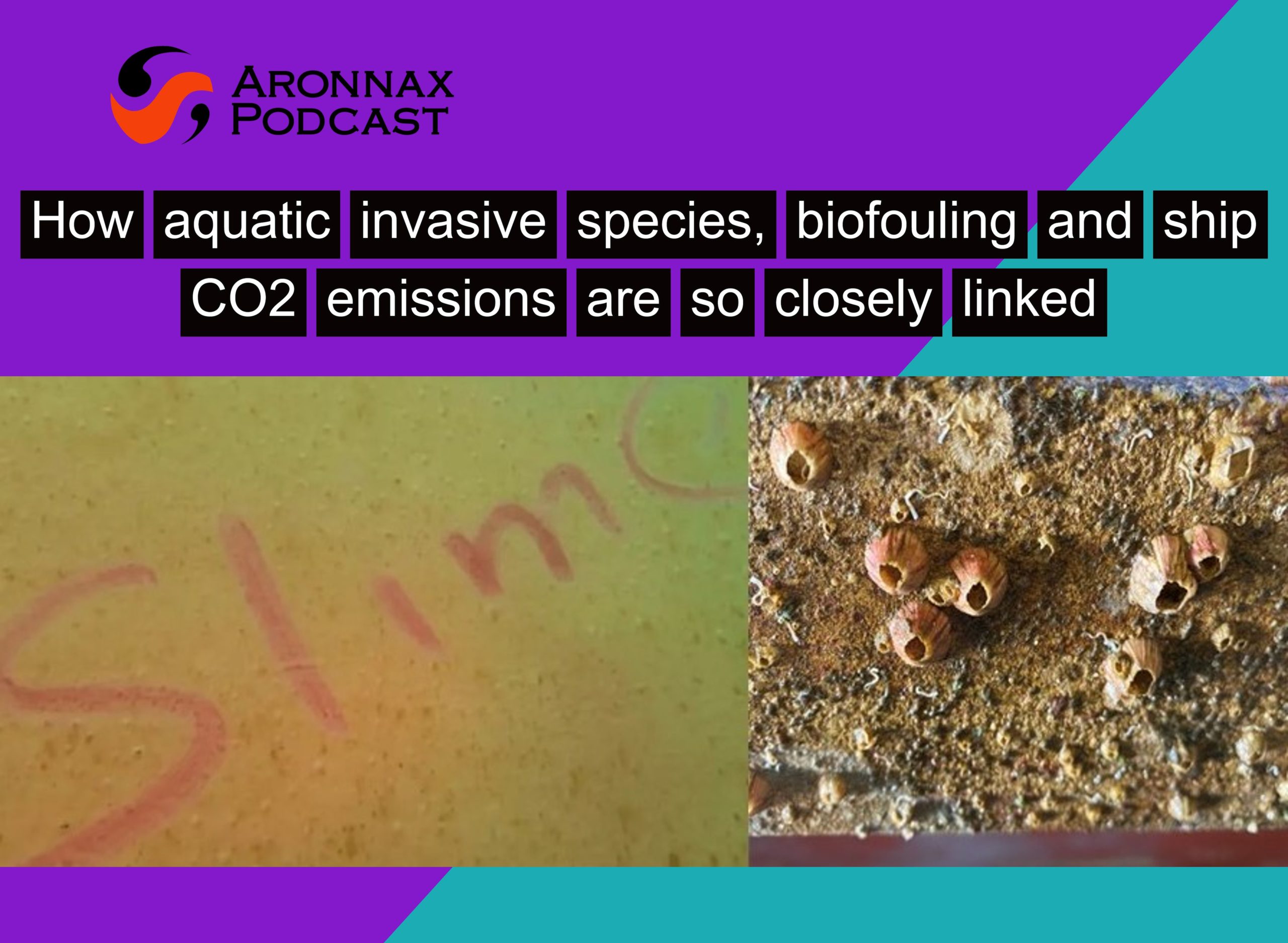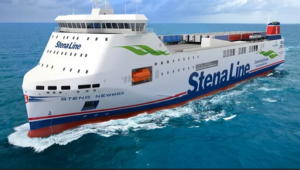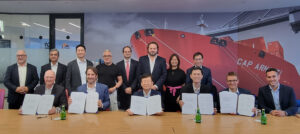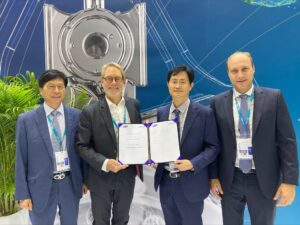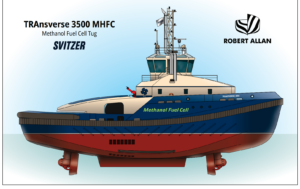Episode transcript:
Hello to another episode of the Aronnax Podcast.
Me? I am Craig Eason, owner of Fathom World and host of the podcast. I’m an independent voice in the shipping space, having started in it over 35 years ago.
This is the podcast from Fathom World looking at the changing technologies, people and environment of the seas, and both Fathom World and the Aronnax podcast rely on advertising and funding to remain independent.
So if you like what we do, if you like what you hear and want to help us create more, please get in touch.
Now on with the show.
Back in 1992 I was listening on the BBC world service while out on a ship somewhere, about the Earth Summit in Rio de Janeiro. It was hailed as a key step in our, yes that’s everyone on the panet beginning to do something about the planet we had realised we rebeginning to ruin.
Now two topics in those talks were, of course global warming (as it was called then) and biodiversity loss, and the latter included concerns about the oceans and the risk of aquatic invasive species that could come from one region to another, gain a foothold and frankly wreak havoc environmentally, and also economically.
Even back in 1992, that was 30 years ago it was already identified that shipping was a major way this was happening. They came form ballast water, and they came from fouling on ships hulls.
Our, and by this I mean the industry’s ability, to tackle this has frankly been awful. I’ll not get into the Ballast water convention of 2004 here, just to say even today it still has many critics about its effectiveness.
But that’s not what this episode is about because an even bigger problem exists with biofouling of hulls, propellers, rudders and any so called niche areas around a ships hull where species can exist, and hitch a ride to a new habitat.
Invasive species have been known to wreck aquaculture industries, to create economic problems in ports and to have severe impacts on sensitive bioregions.
But hull fouling also creates a huge cost to shipowners, and a new report from the IMO, from the Glofouling initiative reveals just how much of a problem. There are no regulations on biofouling cleaning. There are on hull coatings which are used to reduce growth on the hull, with certain chemicals being banned or restricted due to their toxicity and environment al risks.
There are the IO biofouling guidelines, which have largely been ignored.
So how can shipping take biofouling seriously and reduce the risks of invasive species?
The answer is of course in the details of that new report that shows that fouled hulls can increase ship fuel consumption by double digit percentages, and considering ships largely use fossil fuels, add to their emissions.
This increase in fuel consumption and CO2 emissions is potentially huge.
Now, there’s a piece of legislation that anyone in shipping knows is about to come into force and will hit the industry next year, it’s the Carbon Intensity Indicator rating, of CII, which will be an A to E assessment of a vessels performance.
It’s already creating scares with experts predicting a need for slower speeds, thus more ships, of shorter port stays, of adding fuel saving technologies and putting vessels on new routes.
The CII rules mean any vessel getting a D rating for two years in a row, or getting an E rating for one year, needs to take corrective action.
Worth remembering that the IMO’s aim is to tighten this rating criteria regularly forcing ships to be cleaner year on year.
In short ships that develop fouled hulls will see their performance go down, their rating worsen while their fuel bills go up.
I was invited by the International Maritime Organization’s secretariat to moderate the GloFouling R&D Forum recently.
It was a four-day intensive deep dive into how invasive species, and biofouling impacts shipping and other ocean industries around the world.
It looked at the existing guidelines, the soon to be completed revision and what measures countries, ports and others, including aquaculture industries, offshore energy and other industries can do to reduce the risks.
It brought in policy makers, ports, equipment makers, and scientists from around the world. There were shipowner representatives there, but only a few who wanted to see what could happen in the future.
One owner representative was Martin Köpke , environmental manager from Container line Hapag Lloyd and currently on secondment at the Maersk McKinney Moller Centre for Zero Carbon Shipping. He explained to me why he sees the link between biofouling and th4e CII as a worry.
Martin Köpke Hapag Lloyd
It’s even the differentiated between the DEA and the DEA probably. So my professional life, I was in energy efficiency.
And when introducing a very structured program to help alkaloid on how performance monitoring and countermeasures, we had a lot of this discussions with our charter owners, for premium parents for premium drydock treatments, meaning a full blast rather than a spot blast. And we can measure the difference. It’s, it’s huge. And over the five years of class cycle, the vessel is five years in a row and the water there is falling there is segregation on the on the paint, and we can measure the difference. And it’s 20 30% in consumptions.
This is is evident out of the numbers we have from 250 ships which we operate, we see those on a daily basis is a sophisticated task to analyze all those data to correct wind weather drafts. But we’ve done properly our homework, we see that we prove that and that’s how we do our decisions.
Host
The answer to getting better efficiency is clearly to have a clean hull.
But here’s the catch. The traditional way to clean a ships hull is to order a diving team to come and start cleaning while a vessel is at anchor or alongside in a port. This is dangerous work and I have been told of divers being killed while spending hours using huge cleaning machines on the massive sides and bottoms of the world’s fleet. The response to this risk has been hull cleaning robots that can be controlled from the shore using umbilical’s.
But with both divers and robots there is still the huge environmental problem of all that fouling falling into the water when the hull is cleaned, and that means potentially invasive species too.
This is also why some of the cleaning robotics that emerged also came with collection of the biofouling, sucking the waste ashore with water, filtering it out and disposing of it ashore.
The port of Antwerp Bruges in Belgium is one port that will let ships clean their hulls, but not by any company they want.
Luc van Espen from the port tells me the approach the four Flemish ports of Antwerp Bruges, Ghent and Oostende.
Luc van Espen, Port of Antwerp Bruges
So we allow in Waterville, cleaning of fouled vessels, under the condition that it’s performed by a service provider that has a permit for that. And these service providers can only get the permits if they prove that they perform these operations in an environmentally sound way.
That means that they have to prove that they have sufficiently high capture efficiency, and a sufficiently high filtration efficiency of the debris which is taking off the vessels. We organize this for decades before granting the permit. And that consists of two phases. The first phase is in on a laboratory scale, in which we do a testing in a cube one cubic meter of water, for example, and where we test these performances that we asked for, so the sufficient and the 90% capture efficiency and the 90% filtration efficiency.
So that’s the first phase and once they have succeeded in that step, they can get to the second phase, which is in dark water, where we also perform a test with sampling and so on and analysis. We are present there ourselves to so for example, the samples taken around the ROV in order to detect whether there are spirits losses or not. And furthermore, we also take samples from the inlet and the outlet of the filtration installation, in order to see whether the filtration efficiency is high enough.
There’s kind of fragmented policy existing among the different ports in the world, which leads to distortion of the living plan level playing fields, between ship owners, service providers, even between ports, which makes it difficult, for example, for a service provider to align with D all these different kinds of policies, and they cannot conceive one single equipment that’s that’s fits to all different policies.
Also for the shipowners, it’s difficult because they do not know what service they can expect in one port or another or even in some boards, there is a prohibition to perform whole cleanings. So that’s embarrassing them because sometimes they have to sail around with ships that are more full than then then then could have receipts is good for them.
Host
Luc van Espen from the Port of Antwerp talking about the approach that Flemish ports take to allowing vessels clean their hulls to remain fuel efficient.
While cleaning hulls does remove hull fouling and reduce the risks of bio invasions and improve fuel performance, there is also the risk that cleaning can rub off some of the hull coatings.
Hull coatings are not only expensive, but surprisingly complex in their design. They are applied in layers and can include biocides, plastic and metals to keep the hulls smooth and effective. These can be pulled off with cleaning, particularly abrasive cleaning, and this is also a worry for ports, harbour and environmentalists.
This is another reason say some cleaning experts to collect as much as possible of what is removed from the hull and dispose of it ashore.
At the IMO, and helping the Glofouling team with its approach to biofouling and guidance to member states is the biofouling GIA, Global Industry Alliance. It’s a collection of 11 companies and organisations that help the Glofouling work in its approach to aquatic invasive species.
During the R&D conference it announced that is was in favour of hull cleaning with capture rather than cleaning without.
The GIA chairman is currently Yusik Kim, who’s also head of one in water cleaning company in South Korea, TAS Global.
Yusik Kim, TAS Global
There isn’t any technology of his cannot, it doesn’t damage at all. Every technology has some kind of damage, but the degree of the damage is differences. Yes, there are some technology. Still it’s it’s if you calculate it with just simple mathematics, it could be a bag, it could be a some kilograms of microplastic. But still, these technology only takes up about five to 10% of the whole world. Still the 90% of the cleaning is done by divers with the plastic disc circulating like 1000 RPM, that definitely does more than 5200 Micros.
The rays coming from the in water cleaning is it’s not only like biological bodies, it’s also chemical and including the plastics. So that the IWC is not only for the invasive species, many people know, sometimes the invasive species, when in productive cleaning is could be difficult to determined the, you know, the environmental risk of the biology.
And also, if you don’t fully understand what’s, you know, even in the proactive cleaning you there can be a bag or seriously, I mean one cubic meter of microplastic plunging into the water, we don’t fully understand what kind of microplastic is doing to our health and to the, to the health of the nature. So until we find out exactly what’s going on, you should prevent cleaning valve capture.
Host
Now the announcement from the GIA did ruffle a few feathers because nearly all the hull cleaning members of the GIA offer in water cleaning with capture.
But there are a lot of companies with robot solutions that do not capture the waste collected off the hull, but some of these are not designed to clean heavily fouled hulls. That’s not the purpose.
In the biofouling publication recently released by the IMO, it shows that even a film of slime on the hull can have a significant impact on fuel performance.
Cleaning the hull before it gets seriously fouled, to remove this slime is the way forward says Rune Skarbø from the Bellona Foundation, who is in charge of the clean hull initiative which promotes regular cleaning
Rune Skarbø (Bellona)
Basically we are, through this initiative, focusing on keeping ship hulls clean and believe that practice cleaning specifically is one of the kind of emerging tools that should be more in use in order to reduce the environmental impact from the shipping industry, in terms of both reducing emissions and potentially also reducing the risk of transfer of invasive species.
..
I know that there’s a lot of voices that are driving towards saying capture only.
I don’t want to rule that out….but I also want to keep the possibility open that if the scientists and the smart people that are working on this are saying that it’s possible to do it without capture, I believe that will allow a different set of technologies that will be let’s say, less complex and more available and actually make the services more available to the industry to use.
So it’s a matter, of course, if you’re going to clean more frequently, the cost of each operation needs to come down, compared to the more heavy duty cleanings with collection, and the big containers and the big, impressive RVs. Right.
To be pragmatic about it, it’s about if, if the technology is going to be or the philosophy is going to be used, it needs to also be commercially viable. And I see different scientists that are saying that, when you only remove very light biofouling, remember that product of cleaning is cleaning very early, it’s should be only biofilm.
And these are organisms that are ubiquitous, so they are existing everywhere. And this, if this is the only thing you’re taking off, you don’t have a risk of actually spreading invasive species.
Host
Rune Skarbø form the Bellona Foundation on the clean hull initiative, and the issue of niche areas came up time and time again during the R&D summit because no robotic hull cleaning system can effectively clean the sea chest, around the rudder stock or inside a bow thruster grating for example.
This is why discussions also looked at solutions such as ultrasonic, ultraviolet light diodes in those areas.
But back to hull fouling.
While companies such as ECOsubsea, Hullwiper, Cleansubsea nd TAS Global have developed solutions to clean heavily fouled ships and collect the debris from the cleaning, companies like Armach Robotics in the US have grown out of naval work and the desire to keep hulls efficient.
Karl Lander form Armach was on one of the panels during the Glofouling Forum.
Karl Lander (Armach Robotics)
There are reports that right now are mandating only collection. But they’re mandating collection with systems of 90% efficiency. And so they’re, they’re allowing some amount of material be to to be let into the water. And we believe the science is going to demonstrate that a proactive cleaning approach is still better for the environment than a reactive cleaning, that misses something. And many ports are still very open to just are not requiring anything. And so we have the opportunity to prove the technology as we tighten and should tighten the regulations worldwide to improve the environment. Yes, it is a much more much smaller system. It’s only a 30 kilo robot. So very, very small, very portable, and see it most in most cases being multiple robots to conduct an evolution. We’ve heard some folks talk about the potential impacts to operations. And we believe we need to fit this regimen into the existing ship schedules to maximize uptake. So the ability to put multiple robots on simultaneously at a competitive cost is going to be crucial.
We are a non collection type system and we’ve opted to go that direction. Because our approach is to be on the hole frequently and habitually, never allowing the following to develop past the biofilm slime stage, to get to anything that we believe needs, needs capture, ultimately working on a concept that’s been coined previously called groom before you go. And the idea is if you leave one port with a clean haul, anything you that collects on the haul in a direct transit to the next haul is going to be extremely low risk, it’s gonna be minimal amount of material first off, and then second, it’s a not going to be a biosecurity threat in that next port and continually keep the hole clean, improving your fuel consumption and not posing any additional environmental risks
Host
So what approach should Ship owners and operators take. Well there is another catch in this, and that is the charter agreements between owners and operators, where an owner may be responsible for cleaning, and the operator the fuel costs. I was told at the Forum this has been looked at it the past, but has so far failed to be fully resolved. It is hoped however that ships going from a B to D because of fouled hulls may be the incentive for owners taking the issue more seriously.
Here’s Martin Kopke at Hapag Lloyd Again on why he thinks they will
Martin Kopke
So I think in general, we need to understand that how performance and how management is one of the key levers to pull for decarbonizing our industry, when we look at new fuels, alternative fuels, they have a long way to go that we can produce oil for green fields or that the regulations are in place.
So what’s left and the time between its energy efficiency, and their vehicle performance is is a huge contribution. And I’m happy to see that that the IMO is addressing that with a two digit percentage number one we can reduce by having cleaner holds. If we go to the new technology, we ship operator, our technology agnostic, we will comply with regulations.
Nevertheless, we say when we think about grooming and we know having a clean house is an efficient haul. And there are a lot numbers out there that even some slime is 10% More consumptions and containerships burn a lot of yield. This we want to avoid and we want to keep clean hole and grooming at a very early stage. Without captcha, we think it seems to be a very good idea. Of course at the end of the day rely on the scientific results. And we’ll of course comply
Host
But the ability to either groom (Or do proactive cleaning as it is sometimes called) will obviously depend on the ports and member states taking an approach.
Luc van Espen from the Port of Antwerp Bruges on why the revision of the guidelines should lead to something more mandatory to help the threefold risks of biofouling: aquatic marine invasions, increase CO2 emissions and plastics and metals in harbour waters
Luc van Espen
We are happy to see that there are there is revised guidelines and that this will lead to kind of international standards on hull cleaning and propeller polishing. We hope first of all that this will stimulate the ship owners and the boards to apply these standards to him by seeing the good examples of other boards and other ship owners. And yeah, maybe it would lead to an mandatory guideline like like you said the ballast water convention Shouldn’t suddenly if not everybody is going to apply this spontaneously. And but maybe you can start with a voluntary application also to build up let’s say experience with the application of the of the guideline, but I think in the end there will be a mandatory aspect on this
Host
Luc van Espen from the Port of Antwerp Bruges on the hopes for something mandatory for biofouling in the future to help create clarity and certainty. So what do you think? More guidance and let the CII build up interest in biofouling response and CO2 reductions, or a mandatory tool to help reduce the risks of marine invasions and the negative impact on biodiversity?
That’s it for this episode of the Aronnax Podcast. My name is Craig Eason and I am the editorial director fo Fathom World the news site focused on the sustainable development of the shipping and ocean space.
Please consider subscribing to the Fathom Newsletter, and of course, like, follow and even get in touch with me.
Until the next time.
Good bye.
More Aronnax podcast episodes


Aronnax: July 3rd
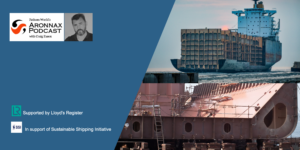
Aronnax: June 29th – Ships and their steel: Turning it green

Aronnax: June 19th

Aronnax: June 4th
























